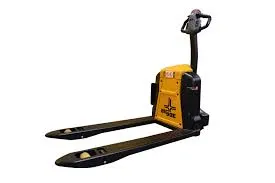


Understanding Fall Protection Types Ensuring Safety at Heights
In various industries, particularly construction, maintenance, and warehousing, the risk of falls from heights poses a significant hazard to workers. Fall-related accidents account for a substantial number of injuries and fatalities, making fall protection a critical aspect of workplace safety. Understanding the types of fall protection available can help employers and workers implement effective safety measures. This article explores the various fall protection types, their applications, and best practices for ensuring worker safety.
1. Personal Fall Arrest Systems (PFAS)
Personal Fall Arrest Systems are crucial in preventing falls during work at heights. A PFAS typically comprises a harness, lanyard, and anchorage point. The harness is worn by the worker and is designed to distribute the forces experienced during a fall. The lanyard connects the harness to a secure anchorage point, which could be a beam, a structural element, or a suitable anchor designed to withstand the impact force of a fall.
PFAS is essential in scenarios where other types of fall protection may not be feasible. For instance, when working on rooftops, scaffolds, or elevated platforms, a PFAS can provide the necessary protection against falls.
2. Guardrails
Guardrails are a passive form of fall protection commonly used in various settings. These are barriers installed along the edges of platforms, roofs, and stairways to prevent workers from falling. Guardrails are typically made of strong materials, such as metal or reinforced plastic, and should meet specific height and strength criteria outlined in safety regulations.
In addition to preventing falls, guardrails can also offer support for workers when navigating elevated areas. They are often used in combination with other fall protection measures to enhance safety.
3. Safety Nets
Safety nets are another effective type of fall protection, particularly in construction and maintenance projects. These nets are installed below elevated work areas to catch falling workers or tools. They are designed to absorb the impact of a fall and minimize injuries.
Safety nets are particularly useful in situations where the risk of falling is high, and workers need the freedom to move around without being restricted by harnesses or railings. However, it's crucial to ensure that these nets are properly installed and maintained to ensure their effectiveness.

4. Scaffolding and Ladders
Scaffolding and ladders play a significant role in providing safe access to elevated work areas. When constructed and used correctly, scaffolding provides a stable platform for workers to perform tasks at height. It is essential that scaffolding is set up according to safety standards, with proper bracing and support.
Ladders, on the other hand, require careful selection based on the job requirements. Extension ladders, step ladders, and scaffold ladders all have specific uses and safety guidelines that must be followed to prevent falls.
5. Anchor Points
Anchor points are essential components of any fall protection system, specifically in Personal Fall Arrest Systems. These are secure points where safety devices can be attached. Proper selection and installation of anchor points are vital they must be able to withstand the force of a fall and be positioned correctly to offer maximum protection to the worker.
6. Education and Training
No matter the type of fall protection in place, education and training remain paramount. Workers must be trained on how to use fall protection equipment effectively, understand the risks associated with working at heights, and know the correct procedures for securing themselves while working.
Regular safety drills should be conducted to ensure that all personnel are familiar with fall protection methods and can respond effectively in case of an emergency. Furthermore, ongoing assessments and updates to fall protection policies can help ensure that safety measures remain current with industry standards and regulations.
Conclusion
Fall protection is an indispensable part of ensuring worker safety in environments where working at heights is necessary. By understanding the various types of fall protection—such as Personal Fall Arrest Systems, guardrails, safety nets, scaffolding, and anchor points—employers and workers can create a safer working environment. Coupled with thorough training and education, these measures can significantly reduce the risk of falls and safeguard the well-being of all workers involved. In a world where safety is paramount, investing in the right fall protection systems is not just a legal obligation but a moral imperative.



